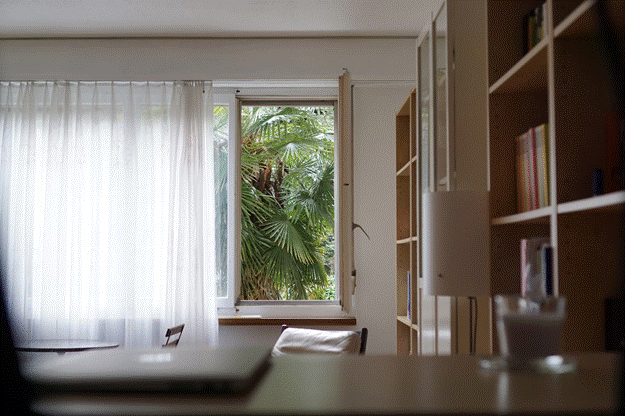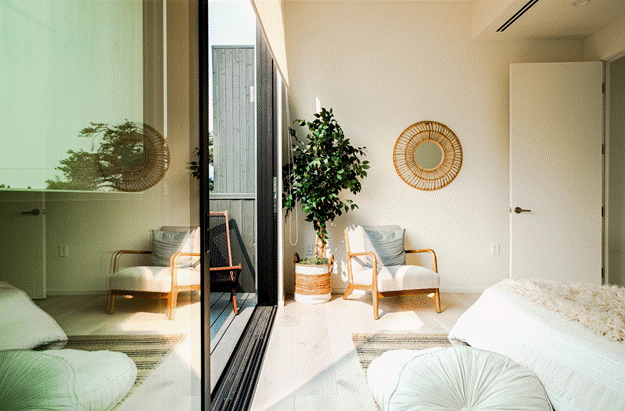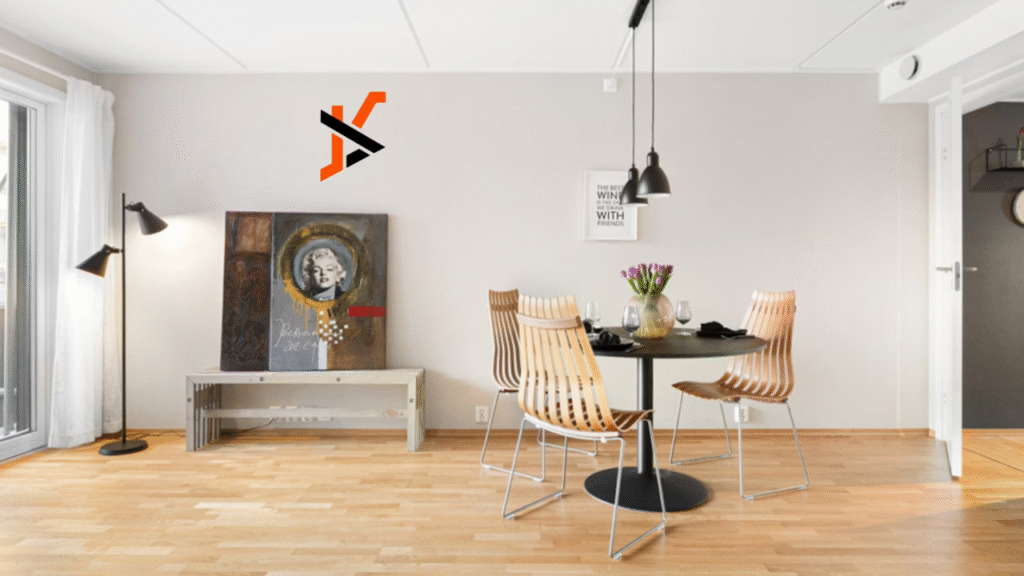Modern homes now prioritize both practicality and style, blending layout, comfort, and design to create inviting spaces. Personalization is on the rise, with homeowners embracing bold colors, unique materials, and expressive interiors that reflect individuality.
Sustainability is also shaping design choices, with eco-friendly materials, energy-efficient solutions, and healthier living environments gaining popularity. At the same time, more people are carving out personalized spaces for hobbies and passions, from reading nooks to hobby rooms. By investing in quality, timeless pieces, homeowners ensure their spaces remain both functional and enduring.
Creating Spaces that Support Everyday Living
Thoughtful layouts are essential in making a home more functional while still leaving room for aesthetic touches. A well-designed living space supports everyday living, making daily activities easier and more enjoyable. One of the key trends in modern home design is the integration of wellness spaces, such as areas for yoga or meditation, which promote health and relaxation.
Blending indoor and outdoor spaces is another popular trend, creating seamless transitions that enhance the overall living experience. Key aspects include:
- Extending living areas to outdoor spaces to maximize usable space and create a more cohesive and comfortable environment.
- Incorporating practical features like built-in storage.
- Using multi-functional furniture to help maximize space, especially in smaller homes.
Discreet technology is on the rise, with smart home devices being seamlessly incorporated into living spaces to ensure they complement the overall decor. This trend highlights the importance of integrating technology in a way that enhances functionality without detracting from the home’s aesthetic appeal. Casually comfortable furniture is also trending, prioritizing both aesthetic appeal and practicality for relaxed living environments.
Open floor plan design is particularly popular in modern homes, fostering social interaction and creating a spacious feel. Furniture arrangements define different zones within an open floor plan, maintaining a cohesive look and ensuring each area serves a specific purpose. This approach allows for versatile layouts that can adapt to various needs and activities.
Incorporate elements like floating shelves, built-in storage, and smart home technology can significantly enhance the functionality and appeal of living spaces. These elements not only maximize floor space but also contribute to a clean and organized environment. By focusing on thoughtful design and practical features, homeowners can create inviting spaces that support everyday living.
Designing Homes for Comfort and Quiet

Comfort is a top priority in interior design for 2025, with a significant emphasis on soft furnishings and cozy colors that create a welcoming atmosphere. Flooring solutions that go beyond appearance to provide comfort are essential in creating peaceful indoor environments. Sound-deadening flooring, for instance, can reduce noise and contribute to a tranquil living space, enhancing overall comfort.
Design trends are shifting towards oversized sofas, rounded edges, and earthy tones to foster a more inviting and serene atmosphere. The integration of natural elements, such as plants and natural materials, into interior spaces is encouraged, as studies suggest that bringing natural light indoors can enhance overall well-being. Additionally, various design styles are emerging to complement these trends.
Blending comfort with functionality ensures that spaces remain livable without sacrificing style. Incorporating soft textiles and colors that evoke warmth and tranquility transforms a home into a sanctuary promoting relaxation and peace. Thoughtful design choices, such as using noise-reducing materials and cozy furnishings, can transform a house into a truly comfortable and quiet retreat.
Exploring Modern Layouts for Contemporary Living

Unique layouts have the power to reshape a home’s visual flow and functionality, offering both striking aesthetics and everyday practicality. Among these, split level home plans designs stand out—they cleverly optimize space while creating distinct zones within the home. This approach delivers a contemporary look without sacrificing livability, making it a smart choice for modern lifestyle needs.
Open-plan living is another hallmark of modern spaces, merging different areas to enhance functionality and social interaction. Successful open layout layouts use furniture and decor to define different zones, ensuring a cohesive look while maintaining distinct areas for various activities. This approach allows for a flexible and adaptable living environment.
In small space living areas, light-colored furniture and glass-top tables can create an illusion of spaciousness, making the space feel larger than it is. To avoid a bland or overwhelming feel, it’s essential to incorporate rugs, lighting, floor lamps, task lighting, and varied textures, adding depth and interest to the design. These elements help create a balanced and visually appealing console table space, allowing for more light in the room.
Functional layouts should balance communal areas with private retreats to suit diverse family needs. Incorporating soft furnishings can help mitigate noise in open-plan living spaces, enhancing comfort. Carefully considering layout and design elements leads to modern living spaces that are both stylish and practical.
Incorporating Personal Style into Functional Design
Incorporating personal unique style into functional design allows homeowners to create spaces that are both stylish and practical. The trend of using artisanal and handcrafted statement pieces enhances personal style while supporting sustainable practices. These unique touches add character and individuality to home interiors.
Casually comfortable furniture blends practicality with aesthetic appeal, creating inviting living spaces that cater to both functionality and style. Incorporating wellness spaces, such as meditation rooms or yoga nooks, reflects a shift towards personal well-being in home design. These spaces provide a sanctuary for relaxation and self-care, including the living room.
Mixing vintage furniture and modern elements allows homeowners to express their individuality while maintaining a cohesive look. By customizing interiors and choosing multi-purpose furniture, homeowners can create spaces that reflect their unique styles and needs. Bold patterns and varied textures add depth and interest, making each room a true reflection of personal taste.
Personal expression in interior design is about creating spaces that feel uniquely yours. From selecting color schemes that resonate with your personality to incorporating design elements that tell your story, every choice contributes to a home that is both stylish and functional. Focusing on personal touches and practical solutions achieves a perfect blend of style and usability.
Conclusion
In conclusion, modern home design is about blending functionality with style. By incorporating personal expression, sustainability, and comfort into your living spaces, you can create a home that is both beautiful and practical. Thoughtful design choices and practical solutions ensure that your home is a true reflection of your unique lifestyle.
Frequently Asked Questions
How can I maximize space in a small living area?
To maximize space in a small living area, opt for light-colored furniture and glass-top tables, as they create an open feel while built-in storage keeps things organized and clutter-free. This approach will help your space feel larger and more inviting.
What are some eco-friendly materials I can use in my home design?
Using natural materials like wood, stone, and clay, along with sustainable and non-toxic options, is a fantastic way to create an eco-friendly home design. It’s all about making choices that are good for both your space and the planet.
How can I incorporate personal style into my home while maintaining functionality?
To incorporate personal style into your home while keeping it functional, mix artisanal and handcrafted pieces with vintage and modern elements, and opt for multi-purpose furniture that expresses your uniqueness. This way, your space will not only look great but also serve your everyday needs!
What are the benefits of an open floor plan design?
An open floor plan design promotes social interaction and offers a spacious, adaptable living space that feels inviting. You’ll love how it enhances your home’s flow and functionality!
How can I create a comfortable and quiet living space?
To create a comfortable and quiet living space, incorporate sound-deadening flooring and soft furnishings alongside cozy colors and natural elements. This will not only enhance comfort but also minimize noise effectively.

